You’ll master five revolutionary Greek enamel jewelry techniques that transformed ancient metalworking. Cloisonné uses thin gold wires creating compartments for vibrant colors, while champlevé etches depressions into metal for three-dimensional relief patterns. Basse-taille carves textured foundations that create stunning light effects, and Byzantine-influenced methods perfect gold wire compartmentalization. Transparent flux applications over precious metals achieve glass-like surfaces through precise temperature control between 1400-1600°F. These sophisticated methods reveal the secrets behind Greece’s most luminous artistic treasures.
Ancient Cloisonné Mastery in Greek Goldsmithing
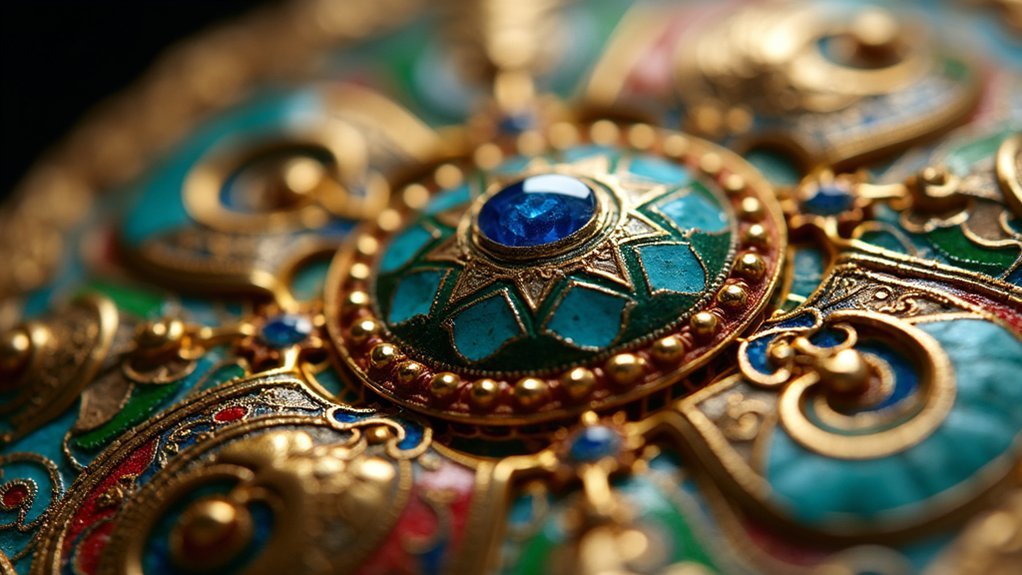
While many ancient civilizations mastered metalworking, Greek artisans distinguished themselves by developing sophisticated cloisonné techniques as early as the 5th century B.C.
You’ll find these goldsmiths created intricate enamel jewelry by applying thin metal wires to gold surfaces, forming compartments for vibrant glass enamels. This metal framework provided both structural support and aesthetic appeal without excessive weight.
When you examine artifacts from ancient Greece, you’ll notice geometric patterns and nature-inspired motifs that reflect the cultural importance of adornment.
The colorful enamel was fused at high temperatures, creating a durable decorative finish that’s survived centuries.
These techniques allowed artisans to produce lightweight yet luxurious pieces, showcasing their remarkable ability to blend technical mastery with artistic vision in their sophisticated jewelry creations.
Champlevé Techniques for Deep Relief Patterns
Although cloisonné techniques dominated early Greek jewelry making, artisans later embraced champlevé methods that created striking three-dimensional effects through carved metal surfaces.
You’ll find that the champlevé technique involves etching shallow depressions directly into the metal surface, then filling these cavities with enamel to achieve deep relief patterns.
Your preparation process requires careful carving or etching to form the desired shapes before applying enamel. You’ll heat the piece between 700-900 degrees Celsius, allowing the enamel to fuse properly.
Different metal oxides provide various color effects, enabling remarkable artistic expression through intricate designs.
This method creates exceptional high relief dimensionality that enhances your finished piece’s visual impact and tactile qualities.
Basse-Taille Method for Textured Metal Foundations
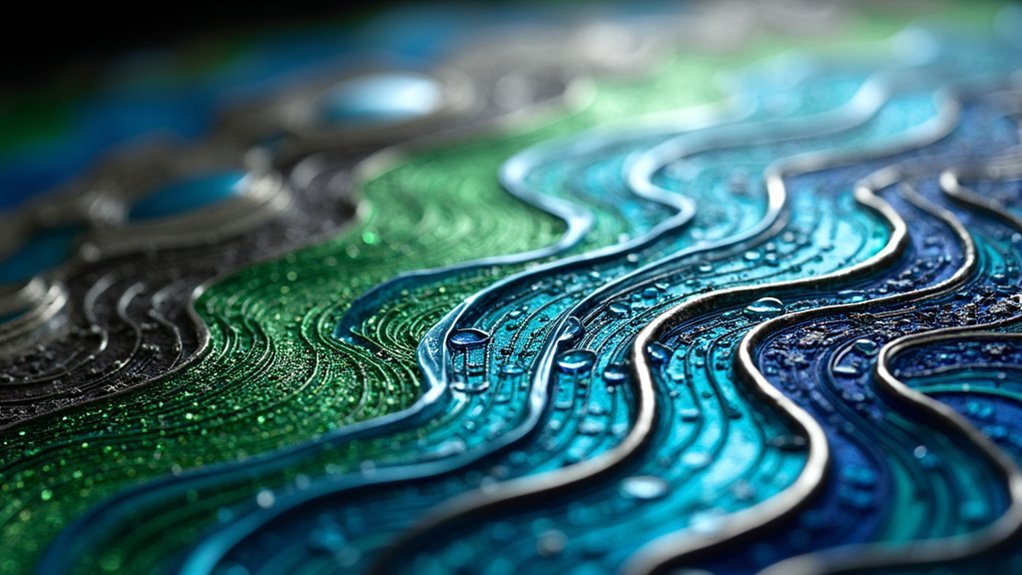
The basse-taille method transforms your jewelry’s visual depth by carving intricate textures directly into the metal foundation before applying translucent enamel layers.
You’ll create stunning visual effects as the enamel layer conforms to your textured metal’s contours, incorporating the underlying metal’s color into the finished piece.
This technique excels in gold and silver work, where your engraving designs produce delicate light and shadow interplay.
You must maintain precise control during the firing process, as engraving depth and enamel type greatly impact results.
You can combine basse-taille with other enamel techniques like cloisonné to achieve intricate designs that emphasize contrast between your textured foundation and smooth enamel surface, creating sophisticated artistic effects.
Byzantine-Influenced Gold Wire Compartment Creation
Byzantine artisans perfected the cloisonné technique by using thin, flattened gold wires to create secure compartments that hold vibrant colors in precise arrangements.
Byzantine craftsmen mastered cloisonné by forming delicate gold wire barriers that secured brilliant enamel colors in meticulously planned geometric patterns.
You’ll find this method essential for creating intricate designs that showcase both geometric and organic motifs characteristic of Byzantine art. The gold wire compartments you create will contain different enamel colors, requiring careful temperature management during firing to maintain proper bonds between metal and enamel.
When you’re working with this technique, you’ll achieve stunning visual effects through metal oxides fused into each compartment.
This approach doesn’t just emphasize the luxurious appearance of gold and enamel—it demonstrates the advanced craftsmanship that defined Byzantine jewelry-making traditions.
Your finished pieces will reflect the sophisticated artistic expression these master artisans achieved.
Transparent Flux Applications Over Precious Metals
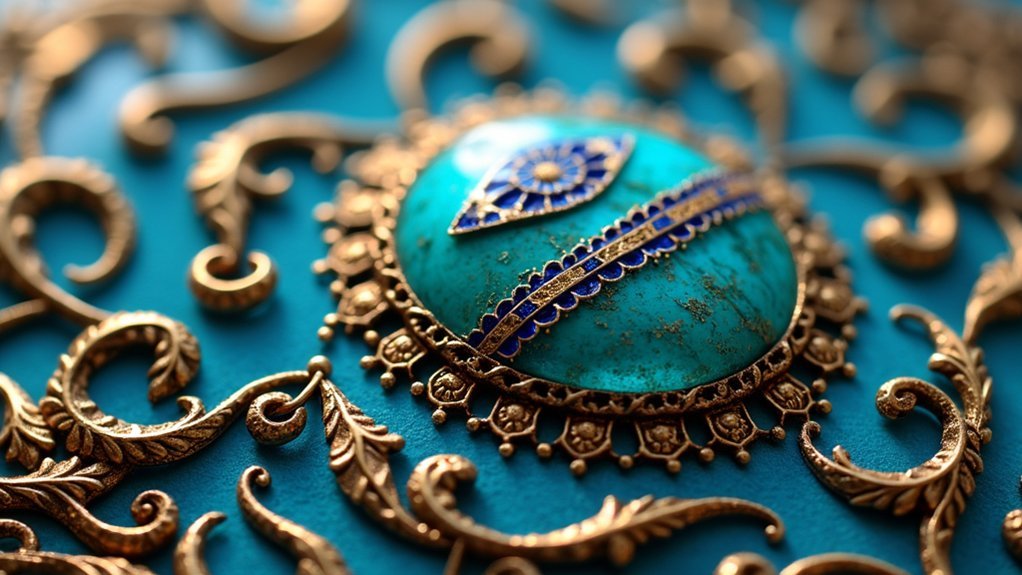
Building upon the foundation work of compartment creation, transparent flux serves as your gateway to achieving luminous depth in enamel jewelry. This critical component enhances adhesion between your enamel and precious metals like gold and silver during the firing process.
When you apply transparent flux over precious metals, you’ll create a smooth, glass-like surface that displays vibrant color and exceptional depth.
Master these essential techniques for ideal results:
- Perfect your layering application – Fill gaps and imperfections carefully to guarantee even finishing.
- Maintain precise temperature control – Fire between 1400ºF to 1600ºF depending on your specific materials.
- Experiment with thickness variations – Create aesthetic effects ranging from subtle translucency to pronounced gem-like appearances.
Greece’s ancient artisans understood that controlled experimentation yields extraordinary translucency effects in finished pieces.
Frequently Asked Questions
Which of the Enameling Techniques Is the Most Difficult?
You’ll find plique-à-jour is considered the most difficult enameling technique. You’re working without backing support, making pieces extremely fragile during firing. You’ll need exceptional skill to prevent breakage while achieving that translucent stained-glass effect.
What Are the Techniques of Enamel Jewelry?
You’ll find several enamel jewelry techniques including cloisonné with wire compartments, champlevé involving carved depressions, basse-taille using translucent layers, millefiori with patterned glass sections, and high-firing methods for durability.
What Is the Guilloché Enamel Technique?
You’ll mechanically engrave intricate patterns onto metal surfaces, creating light-reflecting designs that serve as the base. Then you’ll fuse thin enamel layers over these engravings, producing stunning translucent finishes.
What Are the Three Types of Enamel?
You’ll find three main enamel types in jewelry making: opaque enamel that provides solid color coverage, transparent enamel that allows light through, and opalescent enamel that creates shimmering effects.
In Summary
You’ve now discovered the five essential Greek enamel jewelry techniques that’ll transform your metalworking craft. Master cloisonné’s wire compartments, perfect champlevé’s carved recesses, and experiment with basse-taille’s textured foundations. Don’t forget Byzantine-inspired gold wire methods and transparent flux applications that’ll make your precious metals shine. Practice these time-honored techniques consistently, and you’ll create stunning enamel jewelry that honors Greece’s rich goldsmithing tradition while developing your own artistic voice.

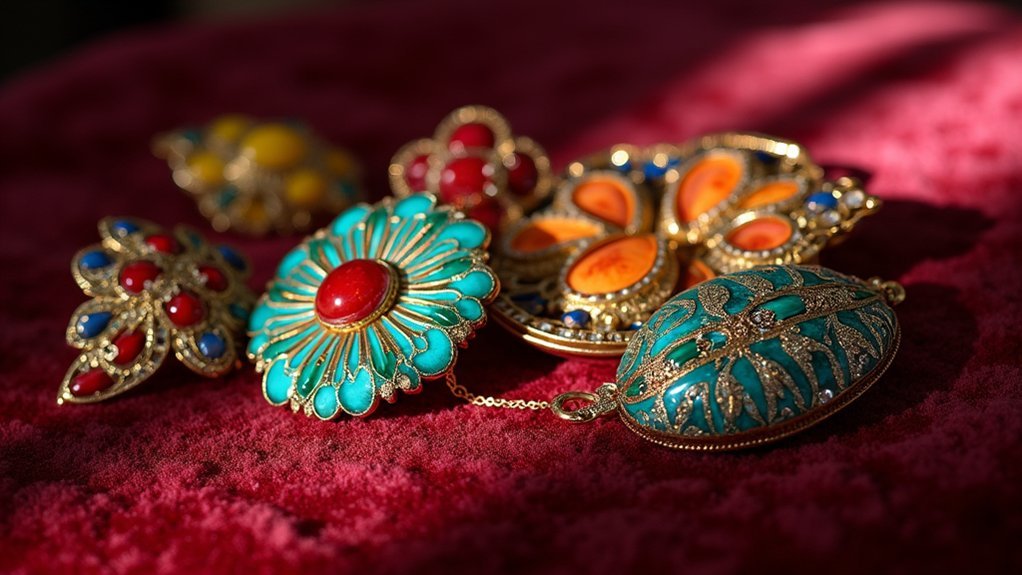

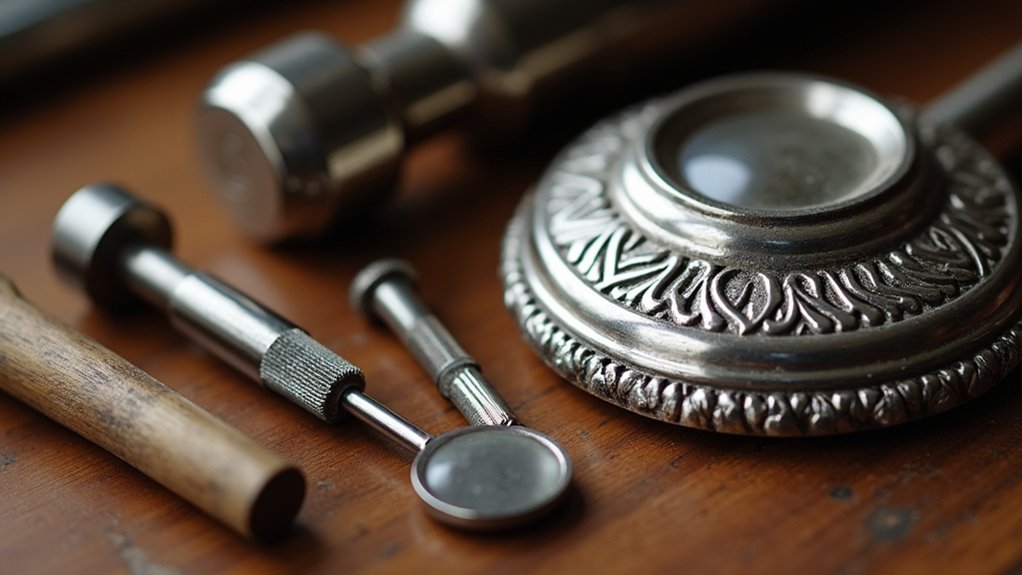
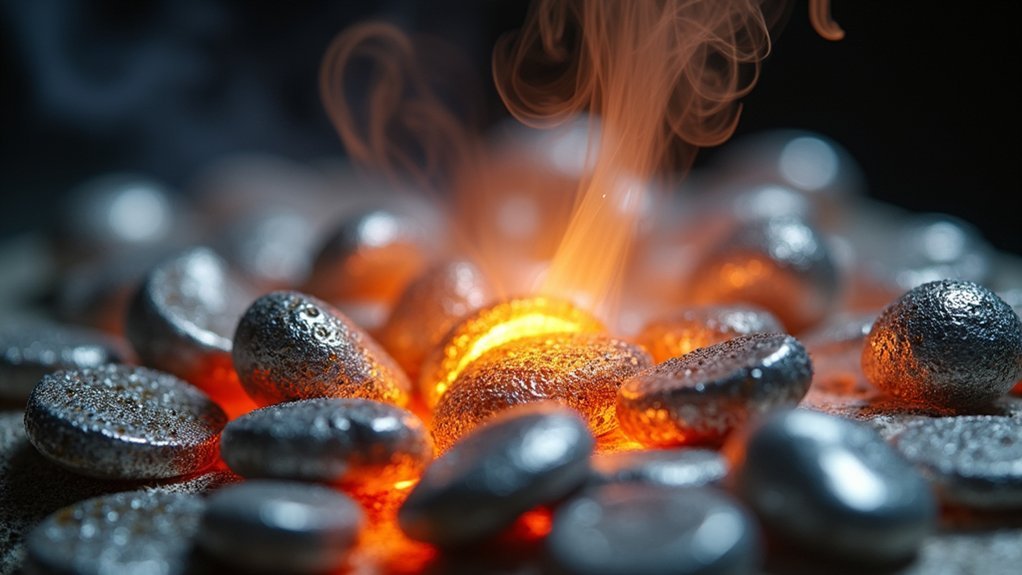
Leave a Reply